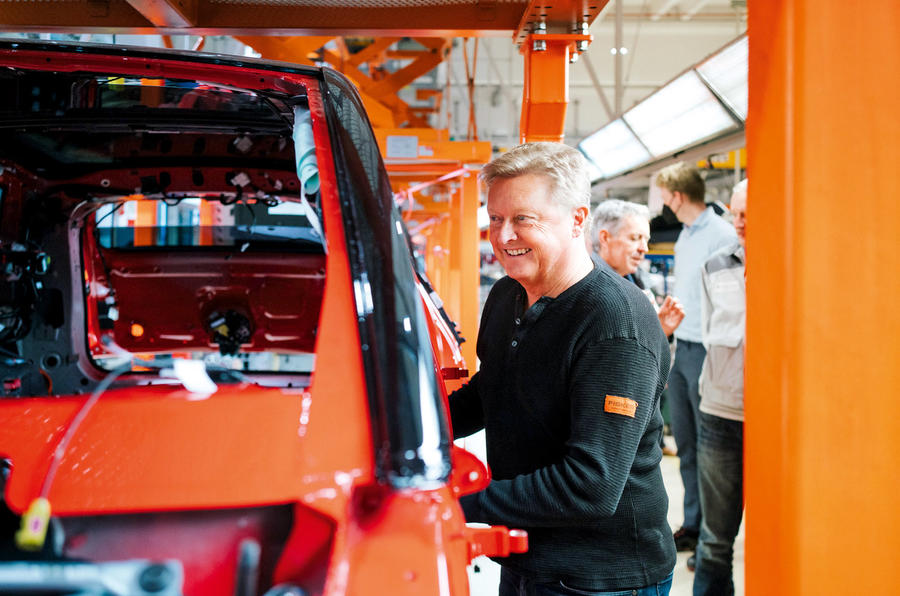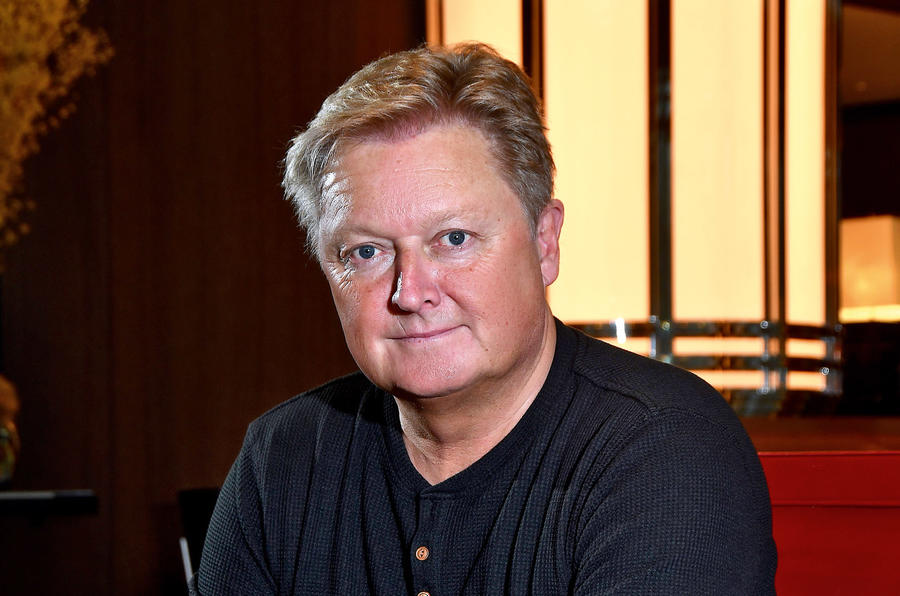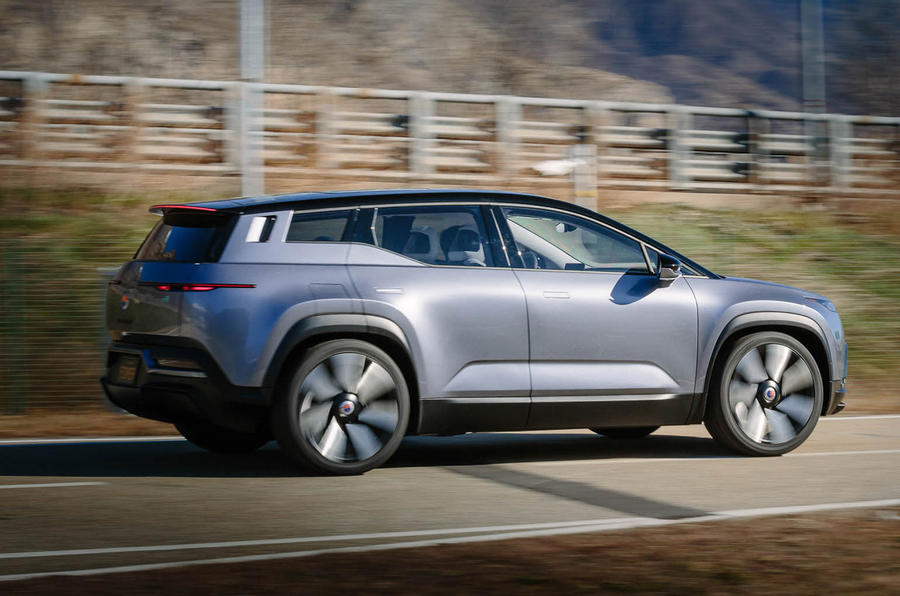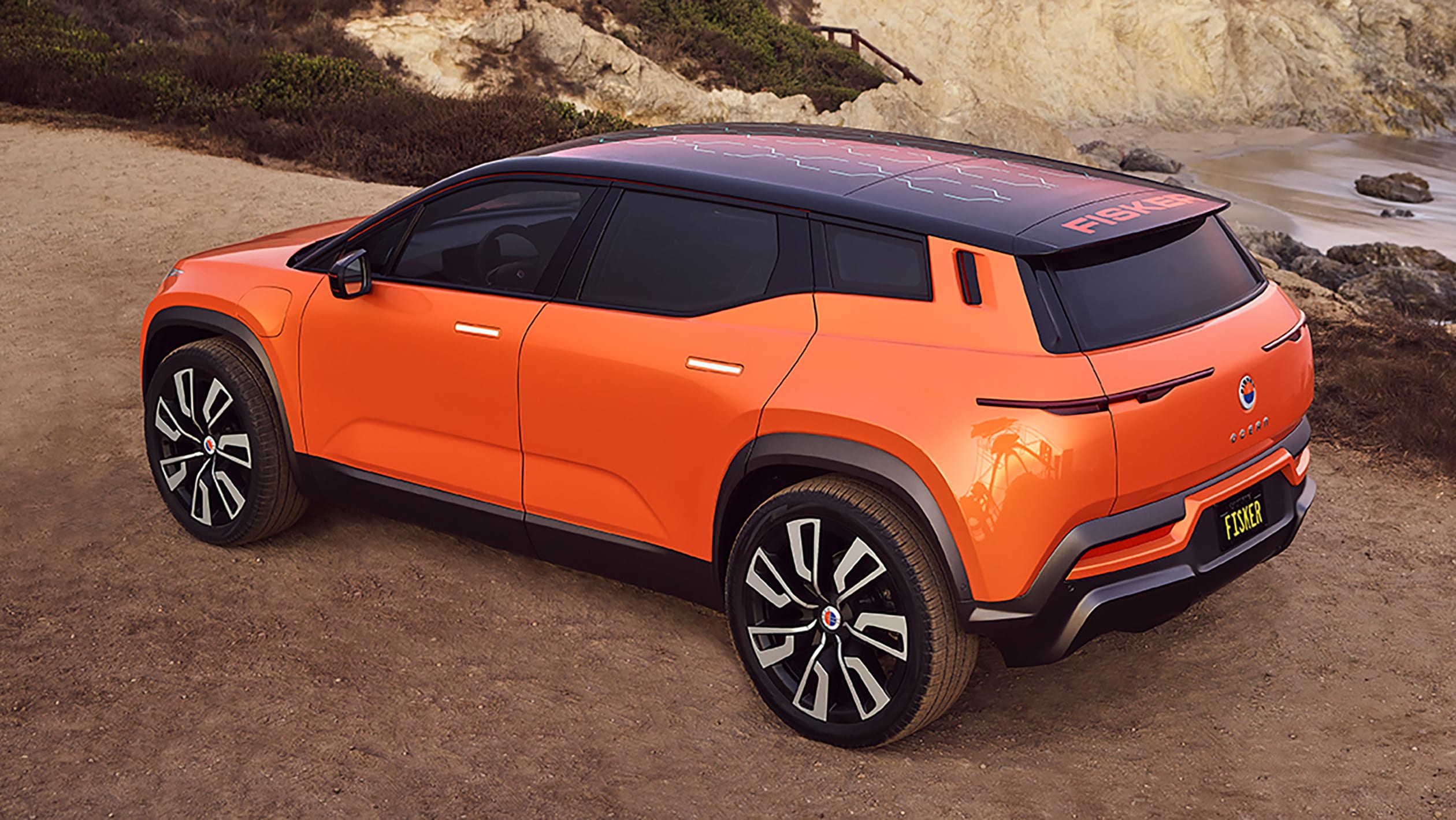After a brave foray into electrification ended in glorious failure, the designer is back with his Ocean SUV.
Henrik Fisker’s idea of a decent hotel breakfast is three fried eggs on a large plate, sunny side up.
This much I discovered when I met the Danish-born, Californian-based EV entrepreneur in a hotel last week – right before he jumped on a flight to Austria to review 47 Fisker Ocean prototypes that his Graz-based manufacturing partner, Magna Steyr, had just finished building. After that, he was off to Barcelona, Spain, where the Ocean was making its European debut at the Mobile World Conference.
Our time together was necessarily short, but what struck me was how efficiently Fisker could eat and talk at the same time – which seemed a neat metaphor for the speed-to-market philosophy that he believes will make his all-new £35,000 (AUD$60,000) electric SUV successful when it goes on sale before the end of this year in five mainland European markets and the US.
Even this breakneck progress with the Ocean is very far from the end of the Fisker Inc story, it turns out. Fisker wants to have launched four EV models by the end of 2025, and they won’t be what he dismisses as “sausage” models, resembling one another closely, but firmly distinctive designs aimed at disparate parts of the model matrix.
However, the Ocean is the pioneer in all this. It has been created and brought to the start of production in just over two years, specifically to minimise the time lag that usually affects the implementation of digital technology in cars, compared with much faster progress in the sphere of communications equipment.
“It’s almost as if the car industry decided 50 years ago that developing a model takes four and a half years and always will,” says Fisker.
“That kind of interval means in-car tech for a new model has to be chosen three or four years before the model goes into production. It’s something younger buyers just won’t tolerate. Our aim is to make them feel, as they once did, that the car is an important flag carrier for technology. We have to do this if we want to be successful.”
You save time, explains Fisker, by rationing it strictly. At key stages of the design and engineering phases, where others might commonly lose six or nine months with “fiddling”, you commit to freezing your design and get on with making it. In the Ocean’s case, it undoubtedly helped that Fisker is both the design chief and the CEO of his eponymous company, so there’s no question of one faction fighting the other.
It’s a boon that the idea received early buy-in from Magna Steyr, which, as well as holding a 6 per cent interest in the Ocean project, is renowned as one of the world’s most efficient contract car builders, with an illustrious clientele of premium marques that includes Aston Martin, BMW, Jaguar and Mercedes-Benz.
It also helps that Fisker, via its 400-strong engineering group in California, takes total control and responsibility for the key elements of the car, such as design and software development.
The initial plan is to make Oceans at an annual rate of around 50,000 cars, but Fisker is confident that as demand rises, Magna Steyr will have capacity to build up to 150,000 and sell them all over the world.
Two major qualities will sell the Ocean, believes Fisker: progressive design and sustainability. He’s pleased with early assessments that the Ocean looks great (“I was able to decide the proportions as well as designing the shape”) and explains how he insisted on eye-grabbing features, such as the 22-inch wheels.
What’s more, he cites Magna Steyr’s recent claim of carbon neutrality for its manufacturing plants and the Ocean’s extensive use of reclaimed man-made materials in its trim and interior fittings as evidence of progress towards full sustainability.
What are the properties that will sell Oceans in such unprecedented numbers? Fisker acknowledges that his suppliers have asked the same question. The low cost is one important factor, he says, as there are few “good-looking, exciting” EVs for less than £35,000 (AUD$60,000).
He then names four others: the Ocean’s ultra-long range for a car in its bracket (up to 628km); the eye-catching rotating 17.1-inch central touchscreen; the so-called California effect, which allows all the windows and the sunroof to open at once; and the largest array of roof-mounted solar panels on any car, which are configured to charge the high-voltage battery system rather than just powering “fans and stuff”, as others do.
Steve Cropley










